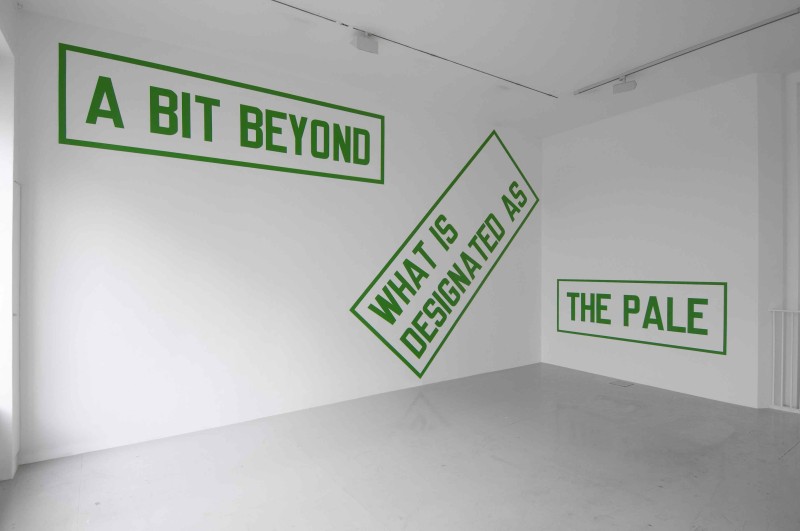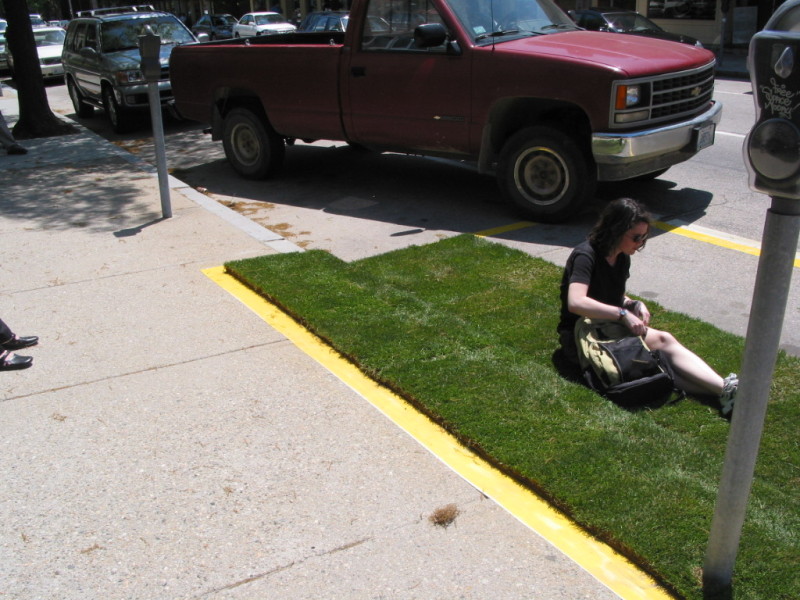- Â
5 Unit 02: Lucinda Hitchcock
w Unit 2: Critique Format October 13, 2015
Y Unit 2: Encouragement / Advice
Unit 2:
We saw evidence of excellent work and a good variety of visual explorations on the wall. Well done! You put lots of basic design principles to work in your explorations: form, color, material, context/subversion, language (type), color, quantity variations! Also photography, framing, perspective, cropping, scale, order. All Good.
Now you have the task of re-presenting what you did in a new form. You must frame, or re-frame, the record of the event(s).
This is what this field is largely about: Visual Communication, pure and simple.
Breaking it down:
You performed some interventions on various sites. You used form, material, language, color, quantity, context. You created many different environments and moments in space: strange experiments; bold interventions; quiet visual poetry; surreal and surprising landscapes; and so on. In some cases you created narrative. In some cases you made purely aesthetic or formal moves.
Now you need to decide what it was you did, and you need to look at the records of these events, and work out how to tell others about them.
Will you approach your next step as a sorting/organizing system? Or some other method? Will you use a narrative approach? Will you develop a gathering or archive or collection? Will you create some sort of installation or wall system? Or make a book or a video to sort or reframe the work? Will you edit your material and foreground just one of your interventions? Or try to show all of them? Or create some hierarchy in a single collection? How will (can) your audience share in what happened? What methods can you employ to put your “documentation” to work to communicate to others?
Only YOU can answer these questions.
í Unit 2: Overview & Assignment

Andy Goldsworthy, Storm King Sculpture Park
I suspect no landscape, vernacular or otherwise, can be comprehended
unless we perceive it as an organization of space; unless we ask ourselves
who owns or uses the spaces, how they were created, and how they change.
—John Brinkerhoff Jackson
Preface:
Although graphic design exists in a multitude of spaces, places, and surfaces, it is too often seen as a two-dimensional enterprise. But in fact our work is entirely multi-dimensional. Not only do we design places, wayfinding systems, and exhibits, we also design information environments, complex digital networks, and social interfaces. Moreover, what we produce exists in real time, and real space, used by real people in all dimensions. Designers are experts at reading signs and signals within any situation, large or small. We analyze and record given characteristics, and intervene to change or improve upon circumstances. Design is nearly always engaged with altering, or re-organizing, or improving upon, a given circumstance or set of circumstances, whether at a macro or micro scale.
Lawrence Weiner
Assumptions:
Humans are hard-wired to read signs and signals in any given situation. As we move through our environments, we intuitively and unconsciously look for comfort, safety, and elements that are of value or pertain to us. We avoid danger and discomfort. We are egocentric, but we are also intelligent and quick to read our surroundings. We “read” all manner of spatial form, color, tone, temperature, sensation, sounds, and any number of other characteristics of a place almost instantaneously. We are extremely perceptive and are inclined to find meaning in most things. In this Unit, we will be looking at how we “read” spaces and places, and we will explore how we might intervene upon existing spaces. Our interventions will be a form of discovery — a process for understanding contrasts, narrative, form, and the human desire to form interpretations. As we work for the next two weeks, we will discuss in our sections how we define place; how a place relates to its surroundings; how we embrace the culture of a place, large or small, or how we might subvert its histories and realities.
Jessica Greenfield, RISD MFA alum
Unit Question: How can you alter an existing space (site)?
Additional questions:
-How can you truly “know” a place?
-By altering a site, can you create a new narrative read of the site?
-How does the way you approach the alteration, and the way you frame your documentation of the intervention, affect the “read” of your site.
-How can you document, sequence, and explain your site interventions to create a narrative out of the documentation?
Deliverables:
A designed sequence/presentation (media is open) of your documentation that explains your sites and your alterations to a public audience (us).
Learning Objectives:
1) Getting to know your city and environs.
2) Develop a consciousness about how we define space, place, site, landscape, culture, audience, community
3) Exploration of how formal elements work together, whether in contrast or concord; harmony or discord.
4) Developing resourcefulness around finding unusual and surprising materials or objects to bring to a site for the creation of a new or alternative “read.”
5) Developing an awareness of the power of the artifact/after-the-fact documentation. “How to tell a story for those who werent there.”
Procedure:
- You must choose two sites.
One must be an intentionally built / urban / public / site. Outdoors.
One must be a natural (relatively unbuilt or naturally occurring) environment.
(for example, the RISD’s Tillinghast farm, or (walking distance) Swan Point Cemetery’s woods, or Lincoln Woods State Park, or Weetamoo Woods in Tiverton.) - You must deliberately and attentively get to know your two sites. You should record all manner of characteristics pertaining to your sites. Using photography and other recording techniques, take note of the site’s characteristics, forms, materials, textures, sensations, light, uses, users, sounds, temperatures, intentions. You can also consider cultures, histories, stories, pasts, futures. What was the site. Does it have a past? A future? What can it be? Get to know these two places thoroughly. Think Macro and Micro. Record context and adjacencies. Record edges and boundaries. Record before and after your alterations.
Pay attention to how you frame your recordings/images. How you light or edit your images. How will your technique affect the way an audience might understand your site’s inherent narrative. Show us how you want us to see the site. Show us how the site communicates.
Before the next class meeting you must alter your two spaces in the following ways, and create carefully considered documentary images and recordings:
A.
Transform or intervene upon an existing, built, urban space/place
1) Intervene with color (material is open)
2) Intervene with multiples (more than 25)
3) Intervene with something singular
4) Intervene with language / text / type
B.
Transform or intervene upon a natural space/place:
1) Intervene with language or color or multiples or other items you bring to the place
2) Intervene only with things that you find at the site
RECORD EVERYTHING (photo, video, sound, drawing)
C.
Design your Documentation
for 10/6/15
Bring to class a multitude of images and evidentiary records/documents and begin building a sequential narrative that can communicate to those who were not there exactly what took place; what they might find there if they could be there. Media is open but the sequence of your narrative and how you show a visual flow is to be considered.
for 10/13/15
Bring in refined presentations of your interventions in a narrative sequence of images and texts as needed. These need to resonate with your audience (all of us) in a public viewing, and help us understand the whole sequence of your space alterations.
Required Reading:
Lucy Lippard Lure of the Local
Brief overview of Maya Lin’s work Here
Resources:
RISD Second Life
Resources/Recycling for RI Education



